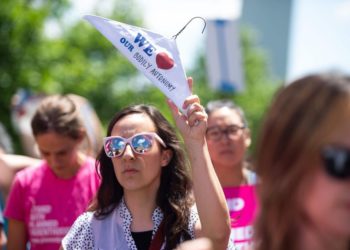When Halla Tómasdóttir, executive chair of financial-services firm Audur Capital, was first encouraged to run for president in Iceland, she thought the idea absurd.
“When people started a Facebook petition encouraging me to run my first reaction was “Who am I to run for President?” Ms. Tómasdóttir told The Globe Post.
But she realized it was about time women ran for office and ended up running.
“I felt it was important for Icelandic girls and boys to see a woman in the running for the Presidency in 2016, but I ran because I care about my country and wanted to be of service for all,” she said. “I was an unlikely candidate, as I had no prior political experience, but I went from 1 percent in the polls to being a runner-up with nearly a third of the vote.”
Ms. Tómasdóttir’s candidacy was a step forward in gender equality, inspiring other women to do the same. Johanna Sigurdardottir became the country’s first female head of state in 2009 – the only world leader to have a same-sex spouse. Katrín Jakobsdóttir, the current prime minister from the left-green party, became the second woman to head the Icelandic government in December.
Iceland has been known as a female-friendly country for decades, having topped the World Economic Forum’s report on gender equality for nine years. Recently, on New Years Day, Iceland became the first country to mandate equal pay between men and women, with companies with a staff of over 25 people required by law to prove that they offer both genders equal pay for work of equal value.
A tiny Nordic country with a small population of only 320,000, Iceland has a strong women’s movement, and thousands of women across Iceland took to the streets in October 2016 to protest pay discrepancy. Despite the country bringing in measures like quotas on corporate boards, women in Iceland still earned roughly 14 to 18 percent less than men in 2016.
The country has been hailed a paradise for women. But Gudrun Jonsdottir, Spokeswoman for Stigamót, the Icelandic Counselling Centre on sexual violence in Reykjavik, disagrees. “It isn’t [a paradise],” she told The Globe Post. “Women are still violated, and we still have a gender pay gap. So you can’t define us as a paradise.”
She added: “I think we have a lot of work to do yet to raise consciousness. Some women say, this is amazing and impossible in my country, but I reply, ‘You haven’t tried, so you can’t say it is impossible’.” However, she recognizes that Iceland having a population of 350,000 people means the distance between citizens and ministers is smaller.
Women in Iceland come together to fight for equality, shouting OUT #kvennafrí #womensrights pic.twitter.com/vTPFwfSoVk
— Salka Sól Eyfeld (@salkadelasol) October 24, 2016
Since 1975, thousands of women across Iceland go on strike to mark “Women’s Day Off” to protest against the gender pay gap. The government has pledged to close the gender gap by 2022, and change has been fast-paced, executive manager of IWRA Brynhildur Heiðar- og Ómarsdóttir said.
“One of the biggest drivers here is that we have had a vibrant women’s movement for decades and the first protest in 1975 really proved a foundation for the next decades,” Ms. Heiðar- og Ómarsdóttir pointed out. “The fact is that things don’t change without mass movements of people demanding change.”
Ms. Heiðar- og Ómarsdóttir recalled that there was only 5 percent of women in parliament when she was born in 1978, and today there is 38 percent. “That’s a huge change,” she said.
Virginie Le Masson, a research fellow at the London-based Overseas Development Institute (ODI), told The Globe Post Iceland’s policies could be applied to other countries around the world but said that alone just isn’t enough.
“Such policies are needed in other countries and they can be applied elsewhere but they are not enough as single policies per see. The government has to support shifts in mindsets and practices in every aspect of life,” she said.
“For instance, an equal pay policy is great but a policy that enforces equal paternity leave is as important to reduce the gender pay gap.”
HRW: Popular Resistance Limits Extent of Human Rights Damage Under Trump





















